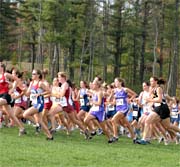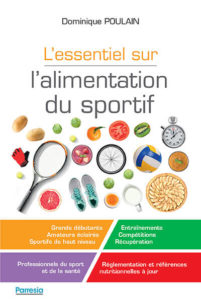Marathon et conséquences du stress oxydatif

A half-marathon and a marathon run induce oxidative DNA damage, reduce antioxidant capacity to protect DNA against damage and modify immune function in hobby runners.
Auteur(s): K. Briviba, B. Watzl, K. Nickel, S. Kulling, K. Bos, S. Haertel, G. Rechkemmer, A. Bub
Réf.: Redox Rep, 2005, Vol 10, Iss 6, pp 325-331
Adresse: Briviba K., Fed Res Ctr Nutr & Food, Inst Nutr Physiol, Karlsruhe, GERMANY
Mots clés: MARATHON RACE ; DNA STRAND BREAKS ; ANTIOXIDANT STATUS ; IMMUNOLOGICAL FUNCTIONS
Résumé : This study investigated whether a 21.1 km (half-marathon) or a 42.195 km (marathon) run modulates DNA damage, antioxidant capacity in lymphocytes and plasma, and the immune system in healthy hobby runners.
Ten and 12 volunteers who completed the Baden-Marathon race in Karlsruhe with a running distance of 21.1 km and 41.195 km, respectively, were assessed 10 days before and immediately after the finish. There was no increase in the levels of endogenous DNA strand breaks immediately after half-marathon or marathon races. A statistically significant increase in the levels of oxidative DNA damage in lymphocytes was found using endonuclease III but not formamidopyrimidine glycolase (Fpg).
The resistance of DNA to oxidative damage induced by hydrogen peroxide in isolated lymphocytes was significantly decreased after both races. The levels of plasma antioxidants such as a alpha-tocopherol, beta-carotene and lycopene were close to, or higher than, those considered optimal for reducing the risk of cardiovascular diseases and there were no significant changes after the races in antioxidant capacity of LDL (lag-time test) or plasma in ORAC, TEAC or paraoxonase assays.
The number and percentage of granulocytes and monocytes able to generate oxidative burst were significantly increased after both races, but the lytic activity of NK cells was significantly increased at the end of the half-marathon; no effect was observed in the marathon runners.
Thus, oxidative DNA damage in lymphocytes, decreased the antioxidant capacity to protect lymphocytes against DNA strand breaks and increased the formation of reactive species by phagocytes in well-nourished hobby runners indicating moderate oxidative damage during such high-intensity exercise.
Fiches Pratiques
Marathon : exemple d’un petit déjeuner pour une compétition le matin (Pdf, 148 k).
Marathon : exemple d’un menu de récuperation (Pdf, 111 k).
Source : Alimentation pour le Sportif, de la santé à la performance,
Dr S. Cascua et V. Rousseau, 286 pages, Ed. Amphora.
Santé et Performance

Notre Société savante a pour mission de promouvoir la Nutrition du sport, dans un objectif de protection de la santé, de recherche de performance, et de prévention des conduites addictives.
Nous proposons des colloques et des journées de formation, fondés sur une actualisation des connaissances scientifiques...
> Santé et Performance

